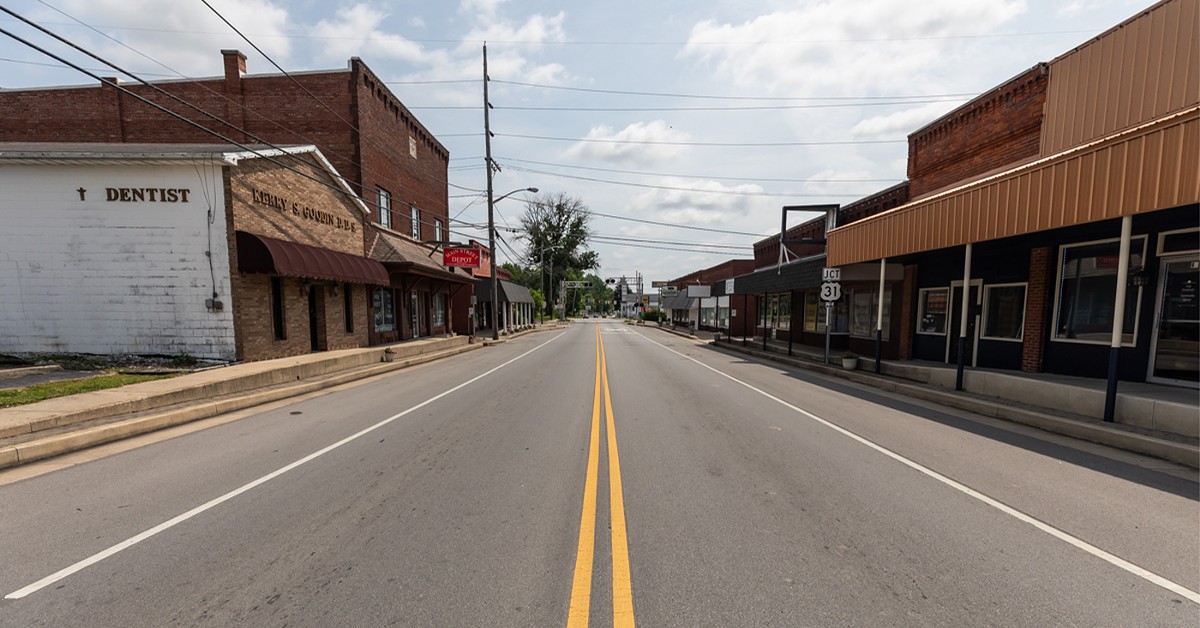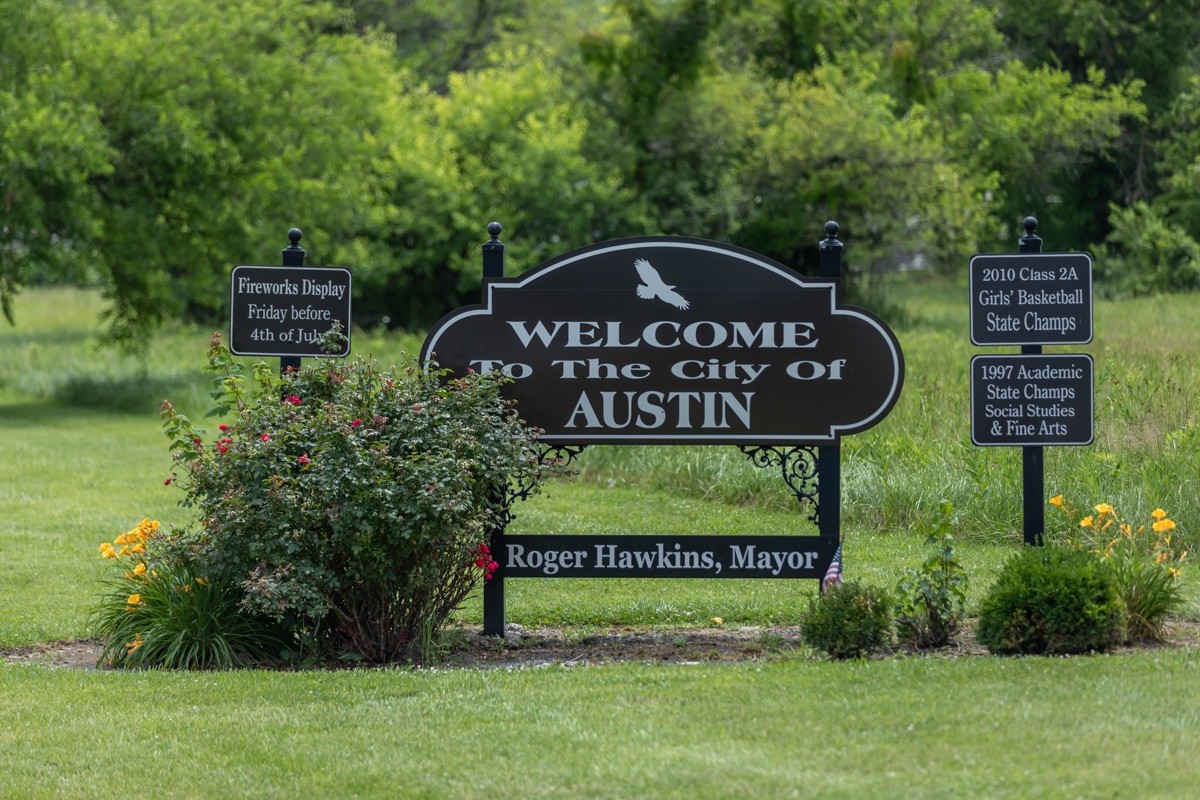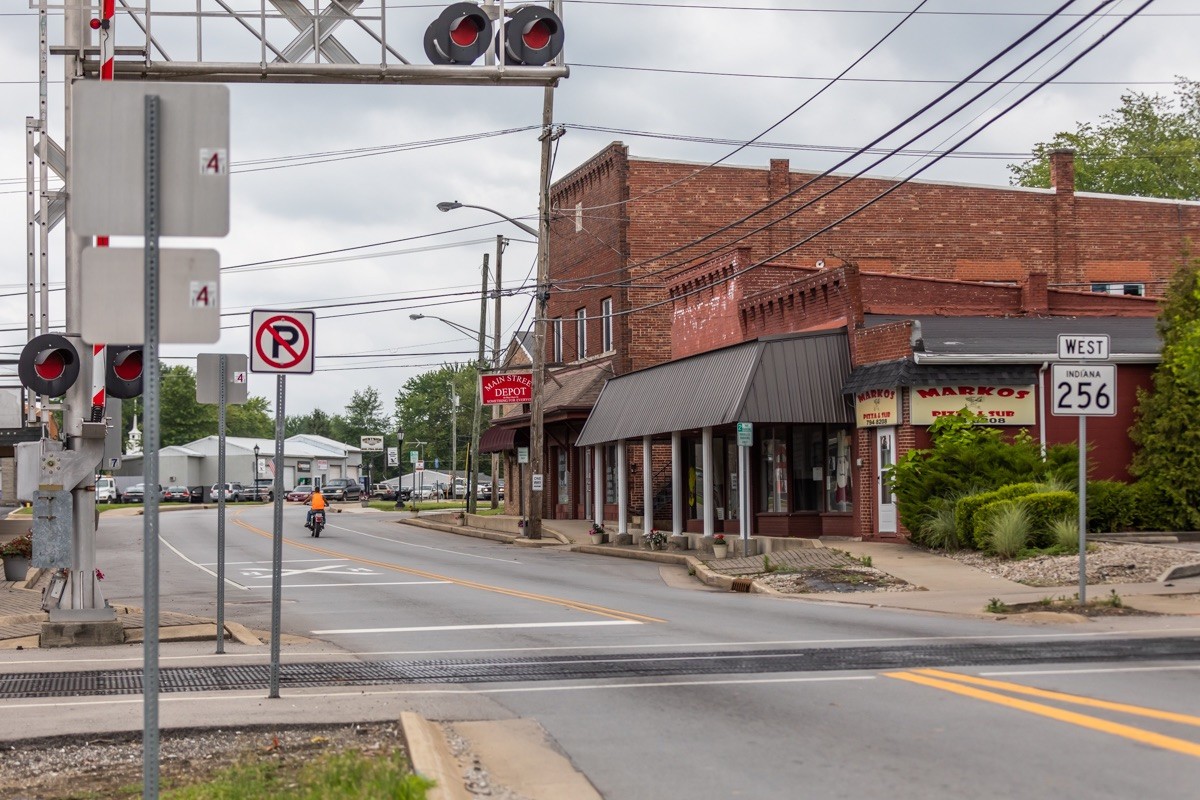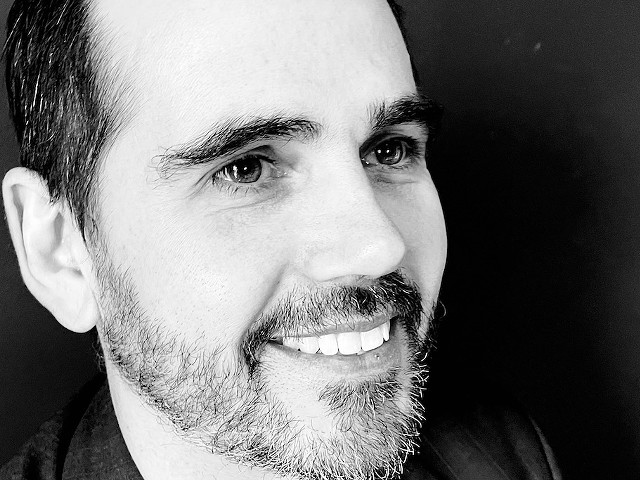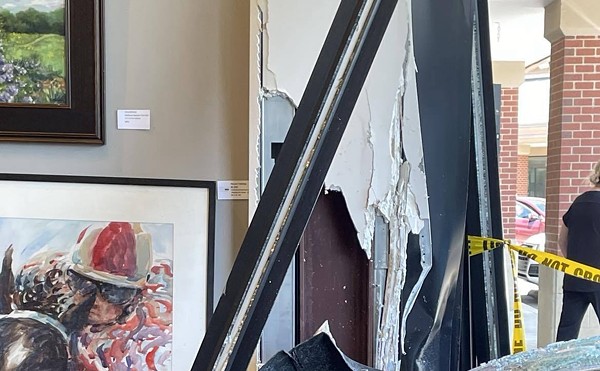A half decade ago, the town of Austin, Indiana — which has a population of less than 5,000 — made waves across the nation for an unprecedented rural HIV outbreak, which was fueled by the opioid crisis. Dr. William Cooke — who at the time was the town’s lone physician — just released a book, “Canary in the Coal Mine: A Forgotten Rural Community, a Hidden Epidemic, and a Lone Doctor Battling for the Life, Health, and Soul of the People,” that recounts his experiences. Below is an excerpt of the book that he wrote along with journalist Laura Ungar.
The COVID-19 outbreak that gained momentum throughout the United States in 2020 highlights how socioeconomic and racial disparities impact the health of people. This fact goes beyond genetics or limited access to medical care. The roots of disease can consistently be traced along a tragic history of toxic stress experienced—often generationally—by marginalized and impoverished people. Socioeconomic stress has been well established as a contributing factor in the development of chronic diseases like diabetes, heart disease, and asthma. According to medical experts, “The negative consequences of health disparities . . . in the US were already a problem before the pandemic.” The article goes on to explain that the sickness and death resulting from COVID-19 disproportionately effects “already vulnerable US populations, and in which the deeply rooted social, racial, and economic health disparities in the country have been laid bare.” In other words, COVID-19 simply put the already existing problem in sharp relief.
My patients taught me just how devastating the health impact of socioeconomic hardships can be. In March 2015, I was the only doctor in Austin, Indiana—a city of 4,300 people in ScottCounty, just off I-65 between Louisville, Kentucky, and Indianapolis, Indiana—when it became ground zero for two unprecedented health-care disasters with roots in the 1980s. One was the national opioid epidemic. The other was the worst-recorded HIV outbreak among people who use drugs in the nation’s history. These two deadly epidemics that had been brewing alongside one another for decades boiled over in Austin.
Whole families were injecting prescription painkillers together, and since state laws made sterile syringes so hard to obtain, desperate people locked in a deadly dance with addiction resorted to sharing syringes, and with them, diseases.
Within a few months, our HIV incidence climbed to one of the highest globally. Experts, researchers, and journalists flocked to Austin from around the world. But since no one had ever seen anything like what was happening in my small town, no one knew what to do.
I told reporters that this wasn’t a freak occurrence. The conditions that made Austin ripe for this crisis existed in towns all across America. We had to act immediately and decisively to prevent other communities across the country from being harmed. I told Dean Reynolds of CBS Evening News as we walked through the hardest hit area of Austin, “I’ve described this community as the canary in the coal mine. This could happen anywhere. We are all Austin, Indiana.”
Dr. Anthony Fauci, director of the National Institute of Allergy and Infectious Diseases, agreed. “I expect we will likely see similar outbreaks of injection drug-related HIV. There’s nothing particularly different about the Indiana community than other communities throughout the country.”
In 2016, after studying what had happened in Austin, the CDC issued its own dire warning, identifying 220 counties across 26 states that were primed for outbreaks of HIV. Unfortunately, in May 2019, four full years after the crisis hit our town, the New England Journal of Medicine reported, “The outbreak in Scott County may have been a warning sign, but the message hasn’t been heeded in many parts of the country.” Despite the importance of harm reduction in curbing the epidemic in Austin, the article concluded that the US government didn’t appear poised to “do what is necessary to address the transmission of HIV and HCV [hepatitis C virus] in rural America.” Echoing the growing concern of public health experts nationwide, Alaska’s director of the Division of Public Health, Jay Butler, said, “The nightmare that wakes me up at 3 a.m. is a Scott County–level HIV outbreak happening here.”
Unfortunately, Austin’s warning to America has not been heeded, and the ramifications have been tragic. New transmission clusters of HIV among people who inject drugs have emerged in Florida, Kentucky, Massachusetts, Minnesota, Ohio, Oregon, Pennsylvania, Tennessee, Washington State, Alaska, and West Virginia.
Some people have asked me why they should care about HIV transmission among people who inject drugs. I believe our common humanity demands that we defend every human life, especially those we view as different. Additionally, HIV is transmitted in ways other than injection drug use. If we don’t take measures to stop its transmission, it will eventually find its way to someone we know or even love.
The opioid epidemic continues to rage out of control. Overdose now claims more lives than motor vehicle accidents, breast cancer, kidney disease, or colon cancer. In fact, the death toll has become so great that life expectancy in the United States decreased for three straight years—from 2014 through 2017. This was the first time life expectancy in the US decreased so drastically in a hundred years, dating back to the years when the country was embroiled in a world war and the Spanish flu pandemic from 1915 to 1918.
“A whole constellation of conditions” affects life expectancy, according to Dr. Howard Koh, a Harvard professor of public health leadership. “It is not just medical conditions, but also the social drivers that appear to be at play, like income inequality and mental distress.”
I have witnessed, up close, the breakdown of a community and the toll it takes on every resident, as generations remain trapped in cycles of poverty, abuse, and addiction. For decades leading up to the health-care disaster in 2015, flames of disease, despair, and death had torn through Austin, consuming whole families. I sometimes felt like a helpless spectator to the horror. If I’d known how much pain and darkness awaited me along the way, I doubt I would have dared begin this journey. It would have been impossible to comprehend the immeasurable suffering I’d witness or the depth of loss I’d endure.
The good news is that we have all the tools we need to end both epidemics. These tools can bring healing to any community, just as they did in Austin, while preventing outbreaks of death and disease. But they’re not what most people expect.
I discovered them as, in time, a fellowship rose from the ashes, forged by fire to find new ways to offer healing and hope. I am honored to stand with my community on the other side of this valley of death’s shadow. Our journey left us irrevocably changed. It’s hard to say if the scars we carry on our hearts will ever fully heal. But the resulting change in Austin has undeniably been healing.
The world took notice in 2015 when the national opioid, hepatitis C, and HIV epidemics all converged in Austin, Indiana. My hope is that by sharing the story of Austin and our efforts to address the HIV/opioid crisis in 2015, I’ll convince your mind, capture your heart, and compel your hands to join in the struggle against substance use disorder and the factors that fuel it and other devastating epidemics taking root in communities across America. Who knows? You may be the one to bring life and hope back to your own community.
Economic Cancers: The Fatality of Poverty
The day I opened my practice was terrifying. After feeling God’s call to become a doctor at fifteen, I had spent the next eighteen years preparing for this one moment…One sixty-something man had a tumor on his tongue so large that he carried a handkerchief with him to catch the saliva that dripped from the corner of his mouth. It was difficult to imagine why he’d waited so long to visit a doctor while living with a disfigurement that so severely disrupted his quality of life and social interactions. The following year, however, I ran across a study from the National Institute of Health reporting that if someone from a rural area simply had a driver’s license, they were at least twice as likely to visit a doctor as someone without one. Since my patient lacked both transportation and insurance, walking to my office was the first opportunity he’d had to see a health-care provider in years.
In just the first few months, I diagnosed patient after patient with late-stage manifestations of chronic diseases. Some were diabetics who had never been diagnosed, let alone treated, and who were already experiencing loss of feeling in their feet and partial blindness. They had been left out of advances in medical screening and treatment because of where they lived and how they were viewed.
Perhaps the most heartrending cases, however, were the young women I diagnosed with late-stage cervical cancer. Week after week, women of all ages would come to see me, never having had a Pap smear because they’d lacked access to medical care.
Most of them turned out to be treatable, but even one pointless death is too many. I’m still haunted by the memory of the first time I had to tell a family that their thirty-eight-year-old, otherwise healthy loved one was dying of advanced cervical cancer, a disease that should have been prevented. And I had to deliver this awful news to more than one woman who had thought she was healthy. Each time it became more difficult because of the inconsolable reactions, pointless suffering, and untimely deaths I’d already witnessed.
Cervical cancer was the leading cause of death among women in the early 1900s. But this was the twenty-first century, when simple access to modern screening and prevention could virtually eliminate the risk of anyone dying of cervical cancer. Nonetheless, a flawed system had harmed the people of Austin and needlessly shortened lives.
I marveled how conditions here in the heart of the richest country on earth rivaled those I saw on mission trips to developing countries. When I shared my concerns with otherwise compassionate people within the community, their reactions shocked me. They dismissed the harms inflicted on my patients as natural consequences of their personal failings. The consensus was that my patients were paying the penalty for their laziness, promiscuity, bad choices, and ignorance. But that didn’t sit well with me—after all, these people hadn’t created their circumstances; their circumstances had created them.
Witnessing the tragedy of innocent people being blamed for dying young caused me to question the prevailing emphasis of my upbringing and medical training on personal responsibility. I began to contemplate society’s moral obligation to ensure all people have equal access to health, opportunity, and above all, life.
The work in Haiti of one of my personal heroes, Dr. Paul Farmer, encouraged me that a doctor could impact the health of individuals by partnering with the community to ensure that a person’s social status never denied them access to the benefits of scientific and social progress. A system that harms people in this way, he said, inflicts structural violence—violent because it harms people; structural because it is embedded into our cultural, political, and economic systems.
I realized the biggest obstacle to prevent the poor in Austin from achieving their full potential—physically, mentally, and spiritually—was their lack of such basics as nutrition, shelter, safety, and connection. For that reason, I couldn’t focus only on bringing basic services like prenatal care, immunizations, and cancer screenings while ignoring the social structures that determined a person’s health. The thing that nagged at my heart most was the realization that by allowing these disparities to continue, we were defining whose lives mattered and whose did not.
Although I suspected multigenerational structural violence had turned Austin into a breeding ground of disability, disease, and death, I didn’t discover how destructive the deprivation was to families right away. Somehow, in all my interactions with city and county officials, not one person had warned me of the rampant drug abuse, homelessness, sex work, teen pregnancy, childhood abuse, and neglect that had plagued the community for decades. And no one could have predicted the utter mayhem that lay ahead.??
What if You Can’t Just Say No?
On the cold morning of February 26, 2015, I discovered HIV had come to my small community the way everyone else in town did—by reading about it in the morning paper. A friend had forwarded me a link to the article. As I sat alone at my desk in Austin reading the article on my laptop, my mind struggled to take in the words: “Indiana state health officials said Wednesday that they have confirmed 26 cases, and four more preliminary cases, since mid-December, most linked to Opana injection,” representing “the largest HIV outbreak the state has ever experienced in one region.” All of the cases would end up being connected to Austin.I was stunned but not really surprised. The opioid epidemic continued to rage, with many of those struggling with substance use disorder still sharing needles. What we didn’t know until later was that a person who had been living with HIV since 2004 had moved to Austin in 2011. At some point after that, cases of HIV began to silently proliferate through our community.
On November 16, 2014, Scott Memorial Hospital diagnosed the first case of HIV the county had seen in more than ten years. One week later, a pregnant woman who had come in for routine prenatal care tested positive for both hepatitis C and HIV.
Two cases in two weeks in a county that had reported only five cases in the previous decade.
Instead of that information traveling forty-five steps across the parking lot to the Scott County Health Department, it went thirty miles south to the Clark County Health Department, which collected HIV data from nineteen counties across southern Indiana. Disease Intervention Specialist Jessie Shields immediately notified the Indiana State Department of Health (ISDH), hoping to enlist more resources. Although she didn’t hear back from the state, she got to work behind the scenes, feverishly investigating each new case of HIV, interviewing patients to find links to other people they may have exposed to HIV who needed to be tested.
By January 2015, Jessie had notified the ISDH of at least fourteen HIV cases in Scott County. But the state still hadn’t committed any additional resources to the outbreak or let us know about it locally.
We later discovered HIV cases were being tracked separately from all other infectious diseases in Indiana. So ISDH’s director of epidemiology didn’t even know about the mounting numbers of HIV cases in Scott County. Finally, sometime around January 23, a concerned ISDH worker pulled the director of epidemiology aside to show her the reports. Shocked, she immediately presented those findings to state health commissioner and future US Surgeon General Dr. Jerome Adams, and deputy health commissioner Dr. Jennifer Walthall. Together they began planning how to inform Mike Pence, the governor and future vice president, and then the local health department about the public-health disaster.
By February 7, nineteen people had tested positive for HIV. By Valentine’s Day, the number had risen to twenty-eight. Privately, the Clark County Health Department’s medical director was trading emails and phone calls with state officials. Even then, there was no public warning or local involvement.
More weeks passed before anyone told local officials. Ron Murphy, who had led the Scott County Health Department for forty-two years, said, “I didn’t hear about it until [state officials] called and told us [on February 23] we had a problem.” He continued, “I’ve lived here all my life. These are our people. I think knowing about it would be very helpful.”
A few days later ISDH prepared a press release to notify the public. Sources in the newspaper article I was reading quickly connected the dots between opioid abuse and HIV, pointing out that “when you have injectable drugs like prescription pills and other narcotics being abused as much as they have been, (Hepatitis) C and HIV are soon to follow.” Dr. Adams added that “because prescription drug abuse is at the heart of this outbreak, [Indiana State health officials] are not only working to identify, contact and test individuals who may have been exposed, but also to connect community members to resources for substance abuse treatment and recovery.”
But we don’t have those resources in our community, I thought.
The article warned readers to take measures to stay safe by not injecting drugs, sharing or reusing needles, engaging in unprotected sex, or having sex with commercial sex workers.
I closed my laptop and gazed out the window. This town has been through so much. For years, I couldn’t get anyone to pay attention to the desperate need in Austin. But now that the scarlet letters H-I-V had captured everyone’s attention. ?
As news and fears began to send shock waves out from the epicenter of the rapidly evolving HIV outbreak, our clinic saw a frenzied surge of activity. People flocked to my office for information and testing. ?????????However, exposure to opioids alone didn’t seem to explain what I was seeing. Some people appeared to be able to walk away from them when they wanted. Did that mean it was as simple as choosing to stop? That had not been my experience working with frustrated families and patients. More than 90 percent of people graduating from rehabilitation facilities were relapsing.
We tell people to “just say no,” as if becoming addicted to drugs is a conscious decision. And if you can’t quit, you can’t quit, the prevailing view is that you must not be trying hard enough. But no matter how Strong we are, we can’t simply will ourselves to walk with a broken leg. Sure, with effort, we may manage a step or two. But we will eventually fall. We are not weak for falling, for needing someone to help us up, for asking a doctor to treat us, or for giving ourselves time to heal. A brain broken by exposure to drugs, a heart broken by unmet basic needs, or a mind broken by mental illness is no different. •
Canary in the Coal Mine is currently available via Tyndale for $25.99.

